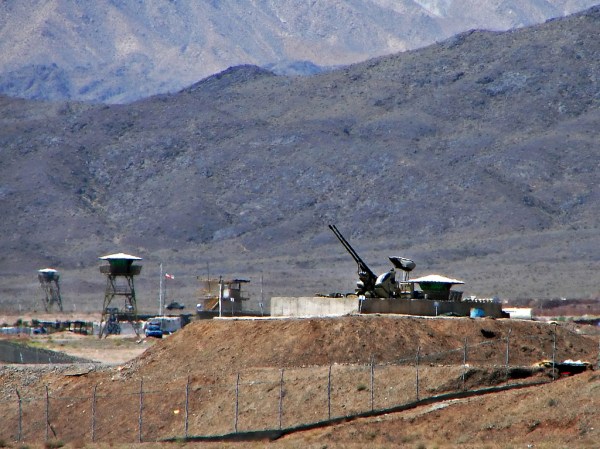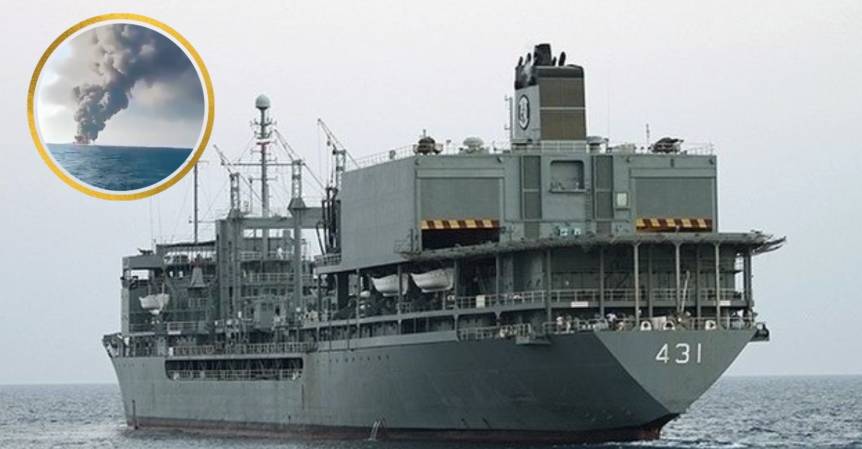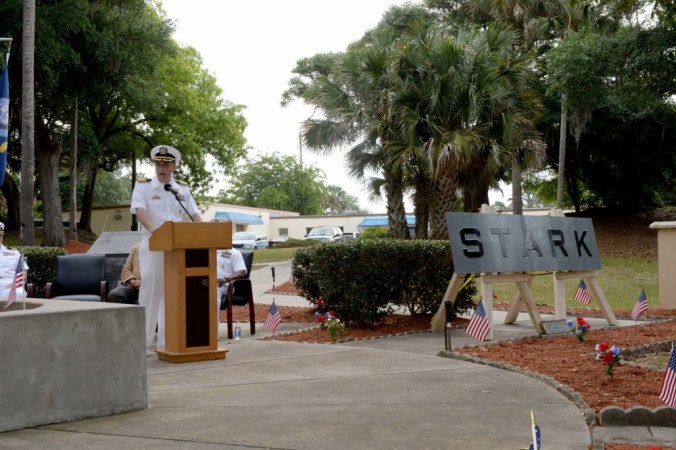Iran’s Supreme Leader, Ayatollah Ali Khamenei released an incendiary video this week, describing the “humiliation” the U.S. would experience if it were to invade Iran. The video reminds the viewer of the protracted American wars in Iraq and Afghanistan and of Hezbollah’s perceived “victory” over Israel in 2006.
The video is as meaningful as any propaganda produced by any government – dubious at best. Iran has never started a war in the modern era. Its standing orders are to never launch a first strike and the success of the Iranian nuclear deal means we will likely not go to war with Iran anytime soon.
That does not keep Iran from trolling the United States more than any country, group, or individual (and we tend to remember that kind of sh*t talk).

Iran is the industrial, military, and economic Shia counterweight to Saudi Arabia, the preeminent Sunni monarchy in the Middle East. Iran considers the Middle East their backyard: sending money, weapons, and supplies to Shia Islamic groups in neighboring countries in an attempt to destabilize or undermine the Sunni (or secular) leadership there.
The Islamic Republic is currently projecting power all over the region, well beyond the borders of the old Persian Empire: they assist Houthi rebels in Yemen, fund and supply paramilitary organizations like Muqtada al-Sadr’s Mahdi Army in Iraq and Hezbollah in Syria and Lebanon as well as others, all fighting Sunni paramilitary organizations funded by members of the Gulf Cooperation Council, such as the al-Nusra Front. These Iranian-funded and Saudi-funded groups both fought U.S. troops during the Iraq War (though likely not side-by-side). The goal is to keep the fighting there, and not in Iran.
Those are the bare basics of the Sunni-Shia religious civil war everyone is always talking about. The promise of military support from the United States is one of the pillars of Saudi (and global oil market) security. Israel is the U.S.’ eternal ally. America has made promises in to fight ISIS in the region, alongside (but not with) Iranian-backed Iraqi militias, Syrian rebels, and Sunni-funded al-Qaeda groups. Now the Russians are sending more advisors and weapons to the Asad regime (which is also an Iranian client state). All this means we could be right back to where we started.

The nuclear deal also doesn’t rule out a military strike from Israel. Israel has long depended on security and defense guarantees from the United States and is not averse to starting wars with countries it deems a threat to their long-term survival. As an added bonus, Israel already has nuclear weapons.
Benjamin Netanyahu’s coalition government depends on a motley mixture of right-wing political parties and ultra-orthodox Jewish parties, who are convinced Iranian leaders want to wipe Israel off the face of the Earth, despite the fact that this phrase is a misquote from a bad translation.
And a surprise from Israel is not unheard of.

Much of Iran’s military hardware predates the 1979 Islamic Revolution and the resulting arms embargo. Because of that embargo, a lot of the Iranian defense industry is homegrown, which means the Iranians are not limited to arms deals with foreign powers.
They can build their own tanks, fighters, and subs. Anything not built in Iran or coming from Russia is likely aging very poorly. Overall defense spending is relatively minuscule, especially in comparison to the GCC.

Keep in mind, U.S. defense spending wouldn’t even fit on the scale above.
Iran has about a half million troops on active duty, not including the 125,000 in the Revolutionary Guard Corps. As the name suggests, the IRGC are the most devoted members of the Iranian military. All Iranian forces take men as young as 18, but the Basij Forces (meaning “Mobilization of the Oppressed”) will take a male as young as 15.
The Basij mainly acted as human minesweepers and led human wave attacks to great effect during the Iran-Iraq War.

The Iranian conventional forces have 4 branches: The Islamic Republic of Iran Army (IRIA), Navy (IRIN), Air Force (IRIAF), and Air Defense Force (IRIADF). Iran’s conventional military are considered “severely limited, relying heavily on obsolescent and low quality weaponry.”
The IRIA has a large tank force of over 1600 but as with other materiel, it’s aging rapidly. They are able to make their own tanks (the most recent based on the design of the M47M Patton), but not in significant numbers and the U.S. has effective anti-armor tactics.

The Iranian Air Force is currently inconsequential. 60 percent of it was purchased by the Shah before he was forced into exile in 1979 and then augmented by Iraqi fighter pilots fleeing to Iran during Desert Storm. It’s a mess, a mishmash of American, Russian, and Chinese planes with some homemade ones thrown in the mix.
The lack of spare parts for these planes caused the development of a robust aerospace industry in Iran, along with their own fighter planes, which the Iranians say can evade radar (good thing the U.S. Air Force created the ultimate dogfighter). With the sanctions being lifted, the government is already putting feelers out to modernize their aging air forces.
The Iranian Navy and Missile forces are the most important branches in its arsenal. If a war ever did break out, Iran’s first tactic would likely be to attempt to close the Strait of Hormuz in an attempt to wreak havoc on the world economy.
The Air Defense Forces consists of ground-based air defenses, using American, Italian, and Chinese surface-to-air missiles, built on Chinese Radar and electronic warfare technology. The deployment and number of Iranian SAM and other Air Defense forces is not entirely known, but reports range from porous to a “significant issue.”
The Iranian Navy is traditionally the smallest branch, numbering some 18,000, including some 2,600 naval Marines, and 2,600 naval aviation forces (but has not carriers) and boasts naval elements from China, North Korea, the former Soviet Union. It has no capital ships and the bulk of its warships are corvettes and destroyers, all heavily armed with anti-ship missiles.
They dp have home-built frigates, however, with up-to-date radar systems, arms, and electronic warfare equipment as well as many helicopters, either Italian, French, or Russian built. They even have some captured from the United States after the failure of Operation Eagle Claw.
The IRIN is augmented with Chinese fast attack ships, Russian Kilo submarines, some home-grown midget submarines which act as torpedo ships and mine layers. The Iranian fleets of patrol boats, missile ships, and mine layers could close the Strait of Hormuz for up to ten days under full attack by the U.S. military.
Much of Iranian military spending is on thousands of missiles for air defense or for attacking ships in neighboring waters. The Iranian surface-to-air missile defense system is also a mixture of American, Russian, and Chinese weapons systems. The SAM system is considered “unlikely to pose a significant threat to American or Israeli aircraft as a long-range air-denial weapon.” The entire system is vulnerable to Stealth-equipped aircraft and would need to be advanced ballistic missile systems like the Russian S-300 (which Iran claims to have).
Here are the four weapons that would cause the most trouble for the U.S. military:
1. Ghadir Midget Submarines
Built with North Korean designs, the oldest finished in 2007, the Ghadir submarine fleet was designed to be sonar evading and carry a heavy load of torpedoes and Shkval rocket torpedoes, which travel through the water at more than 370 mph. The Ghadir submarines are produced by Iran in Iran and are unaffected by the arms embargoes. The Ghadir class can also fire anti-ship missiles at the same time.
2. Sejjil Missiles
Sejil missiles are a homemade, two-stage missile, capable of hitting targets from 2,000 km (almost 1,250 miles). No one knows the exact humber of missiles in the Iranian arsenal, but numbers are estimated in the hundreds and thousands.

The Sejil is another weapon the Iranians produce in Iran which is unlikely to be affected by sanctions or arms embargoes. The solid fuel allows a shorter prep time prior to launch and since they are launched from mobile units, a massive first strike from an attacking country is unlikely to neutralize the Sejil threat.
3. Khalij-e Fars Anti-Ship Ballistic Missile
This is also a self-produced weapon of Iranian design. The Khalij-e Fars Missile has a 350 kilometer range and delivers a payload similar to that of the Sejil missile. The homemade mobile missile also features the quickness of a solid fuel missile on a mobile launch system, but has the added benefit of being able to hit a maneuvering target (such as an aircraft carrier) within ten meters.
Uzi Rubin, the designer of the Israel’s Arrow missile defense system calls this Iranian missile “a total game changer.”
4. Hezbollah
Hezbollah is no longer just a ragtag group of terrorists bent on Israel’s destruction. They are a legitimate political party in Lebanon, with a well-trained, well-equipped and well-funded paramilitary organization. They are trained by the Iranian Revolutionary Guards’ Quds Force, the Islamic Republic’s special operations and unconventional warfare units, operating exclusively outside of Iran’s borders. The Quds Force was responsible for training most Shia militias to fight U.S. forces during the 2003-2011 Iraq War but also helped topple the Taliban government in Afghanistan in the wake of 9/11. They operate from North America to India and Scandinavia to Sub-Saharan Africa and answer directly to the Supreme Leader of Iran.
The United States considers the Quds Force and Hezbollah to be terror organizations. Hezbollah is currently bolstering the government forces of Bashar al-Asad in the ongoing Syrian Civil War. Their primary opponents are ISIS and its affiliates.
Supporting the Asad government means Hezbollah is also fighting the Free Syrian Army, U.S.-backed “moderate” rebel groups, the al-Qaeda-affiliated al-Nusra Front, and the Kurdish People’s Protection Units (YPG). Hezbollah is such a capable force, they are able to project significant strength all the way into Iraq from its power base in Lebanon’s Beqaa Valley.

It is important to remember that although the Iranian government’s extraterritorial forces have attacked U.S. forces and U.S. allies in the past, the Iranian state has never started an offensive war. Iranian military strategy is designed mainly for home defense and the direction of Quds Force operation is usually designed to keep potential threats to the Iranian regime fighting those forces as far away from Iran as possible.
Even a surgical strike against Iranian nuclear targets is likely to light the powder keg and trigger a greater regional war. A full-scale invasion of Iran would be necessary to forcefully curb the nuclear program. Iran is larger and more populous than Iraq and may require up to 75,000 troops to invade, could kill up to 15,000 U.S. troops and would cost $5.1 trillion. For the Iranians, troop casualties estimate from 300,000 to a million killed and up to 12 million people displaced. Even Israel’s own defense chiefs recommend against it. Only total war would keep Iran from getting the bomb if they wanted to.
A nuke is not what the Iranians were after. The regime’s best reason to obtain a nuclear weapon is to ensure the survival of the Revolutionary regime, for the government’s longevity to be more akin to North Korea’s rather than Ba’athist Iraq’s in the scope of the “Axis of Evil.” The Iran Deal gives the Ayatollah that longevity (and a lifting of greater sanctions) without having to expend the money and resources to build and secure a nuclear weapon, something it likely didn’t want to do in the first place.









